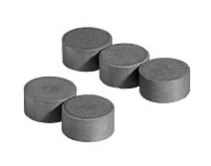Magnets are great, and they are great for a variety of reasons:
- They are fun and functional.
- They can be great memory keepsakes.
- They are easy to make.
- They are inexpensive mementos.
- They are typically rich with extraordinarily large net worths.
Oops…I seem to have mixed up magnet with magnate.
But those two words are not as unrelated as you might think. Check out the Wikipedia definition of a magnate:
Magnate, from the Late Latin magnas, a great man, itself from Latin magnus ‘great’, designates a noble or other man in a high social position, by birth, wealth or other qualities.
Hmm, so a magnate is somebody great. Then that must mean that a magnet is something great! Do you follow my etymylogical reasoning here? No? Okay, good…because there is no etymylogical reasoning going on. This is just my long and drawn out way of saying what I already said in the first line of this post: magnets are great!
So, with that being said, the next question you must ask yourself is which type of magnet is greater for the purposes of whatever project you are working on. And that is why today we are going to break down the differences between two very distinct types of magnets:
- Peel and stick magnets
- Ceramic magnets
Peel and stick magnet sets offer a better finished product as they are made from flexible magnet material, while ceramic magnets are much stronger and versatile. Because of the flexible material they are made out of, peel and stick magnets are not nearly as strong when it comes to, for instance, holding papers on a refrigerator; but, they can still hold up a couple pieces of paper and give a better finished look on the back. The results when you make peel and stick magnets are professional looking refrigerator magnets.
What is nice about a ceramic magnet is you can put it on the back of a button (see applicable sizes below) while the pin is still on. Sound tricky? It’s not. In fact, it’s quite easy, and it allows someone to wear the button all day and then come home, put a ceramic magnet on the back, and display it on the refrigerator until they want to wear the button again.
again.
Let’s see your peel and stick magnets do that!
[Editor’s Note: Ladies and gentleman, you have just witnessed the first recorded magnet trash talking in the history of magnets…or trashtalking.]
The versatility possessed by ceramic magnets works great for photographers making photo buttons as they can sell a sports button and then add a ceramic magnet so that parents can display the button on the fridge. Wear the button during the games, then come back home and put it on the fridge again. (Quick aside: photographers also like to use button easels to display buttons on a desk or bookshelf.)
And there is more, in regards to ceramic magnets. Need to wear a button but you are wearing your favorite shirt and you do not want to put a pin through it? You can put a ceramic magnet behind your shirt and the button will stay there all day long. Although we recommend a MagTag for this purpose, ceramic magnets are much more economical.
Super strong ceramic magnets work with 1.75″, 2.25″, 3″ and 3.5″ pinned back buttons. They can also be used with 1″, 1.25″ and 1.5″ buttons if the pins are removed. No glue or adhesive is needed, but it can be used to permanently attach magnets to buttons.
So the question is, which one is right for you: peel and stick magnets or ceramic magnets? Only you can answer the question, but the best part is that no matter which one you choose, you will be getting something…great!
Brighid Brown – Director of Blogging and All Things Cool at ABM
